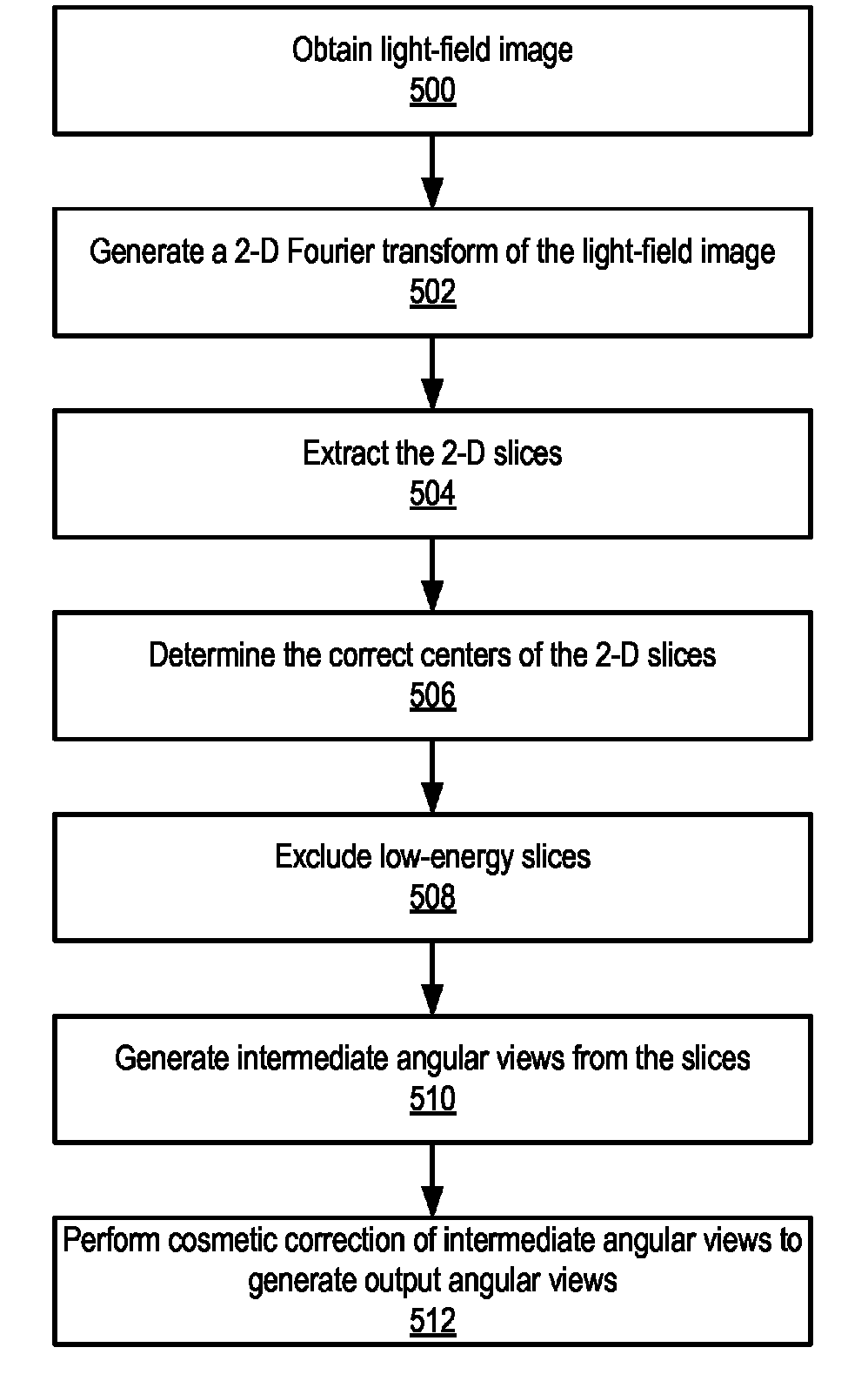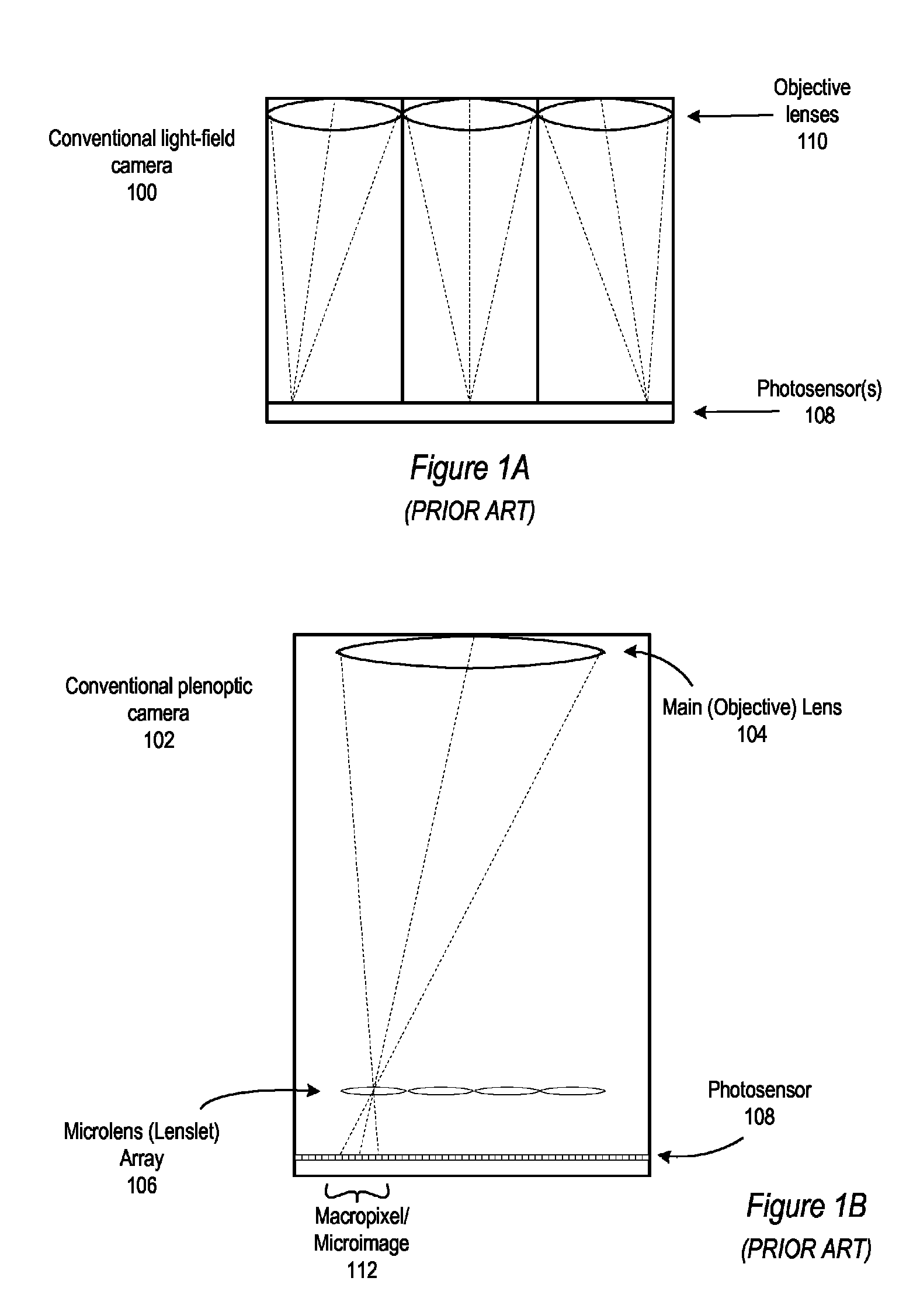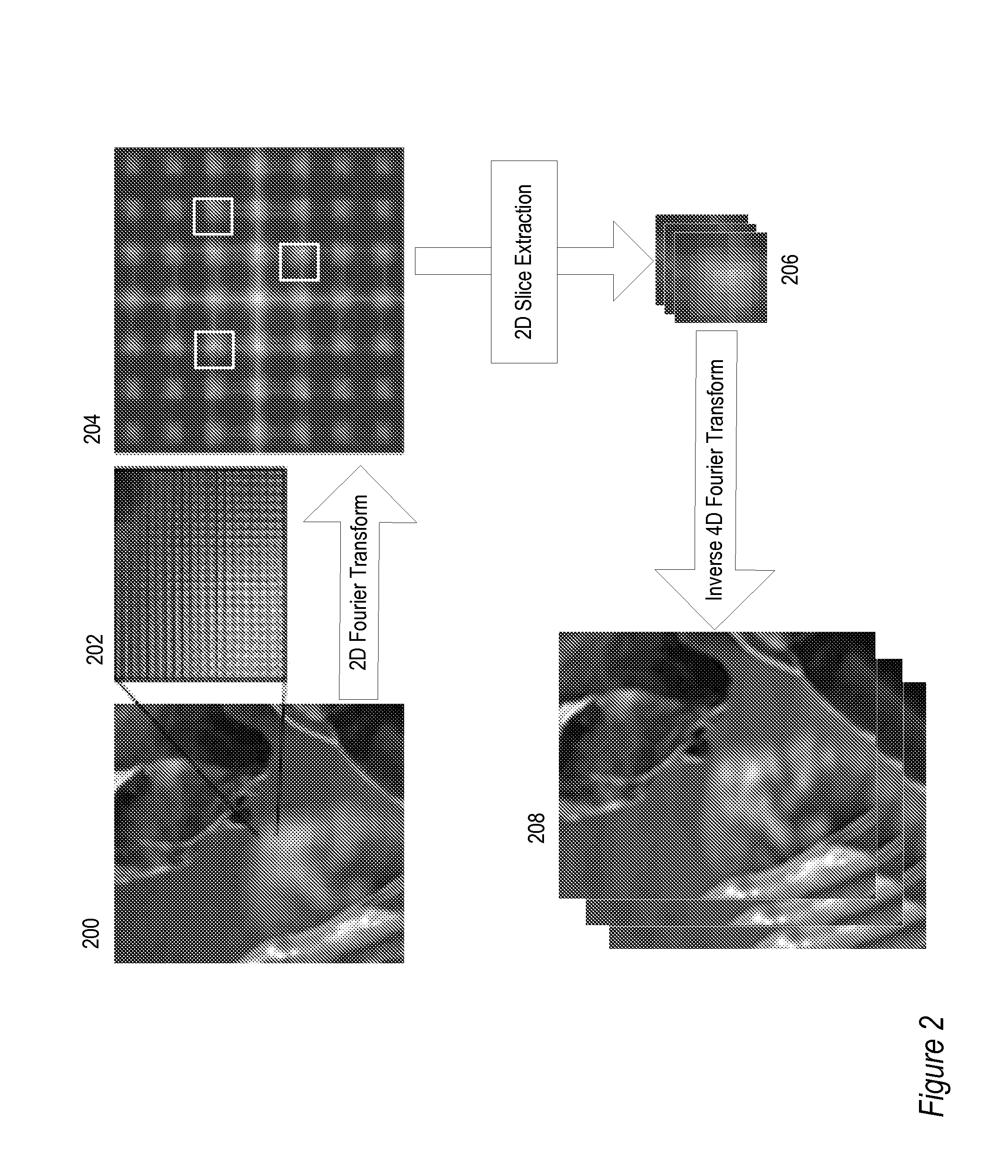Method and apparatus for managing artifacts in frequency domain processing of light-field images
a frequency domain and artifact technology, applied in image enhancement, image analysis, instruments, etc., can solve the problems of inability to capture a large amount of optical information by conventional cameras, inability to capture information about the location of the aperture, and inability to contain information about the directional distribution of light, so as to reduce or eliminate wave artifacts, the effect of reducing or eliminating wave artifacts
- Summary
- Abstract
- Description
- Claims
- Application Information
AI Technical Summary
Benefits of technology
Problems solved by technology
Method used
Image
Examples
Embodiment Construction
[0035]Various embodiments of a method and apparatus for managing artifacts in frequency domain processing of light-field images are described. Various limitations inherent to conventional methods of frequency-domain processing of light-field images may result in artifacts in the resulting output images. A discussion of the characteristics, sources and effects of artifacts that affect the quality of the results of frequency domain processing of light-field images is provided. Various methods for the reduction or removal of the artifacts are described. The methods include methods applied during frequency domain processing of light-field images and methods applied as or during post-processing of the results of frequency domain processing. The described methods for the removal of artifacts may be implemented in software as or in one or more light-field frequency domain processing modules. The module(s) may, for example, be implemented in a light-field image processing application or lib...
PUM
 Login to View More
Login to View More Abstract
Description
Claims
Application Information
 Login to View More
Login to View More - R&D
- Intellectual Property
- Life Sciences
- Materials
- Tech Scout
- Unparalleled Data Quality
- Higher Quality Content
- 60% Fewer Hallucinations
Browse by: Latest US Patents, China's latest patents, Technical Efficacy Thesaurus, Application Domain, Technology Topic, Popular Technical Reports.
© 2025 PatSnap. All rights reserved.Legal|Privacy policy|Modern Slavery Act Transparency Statement|Sitemap|About US| Contact US: help@patsnap.com



